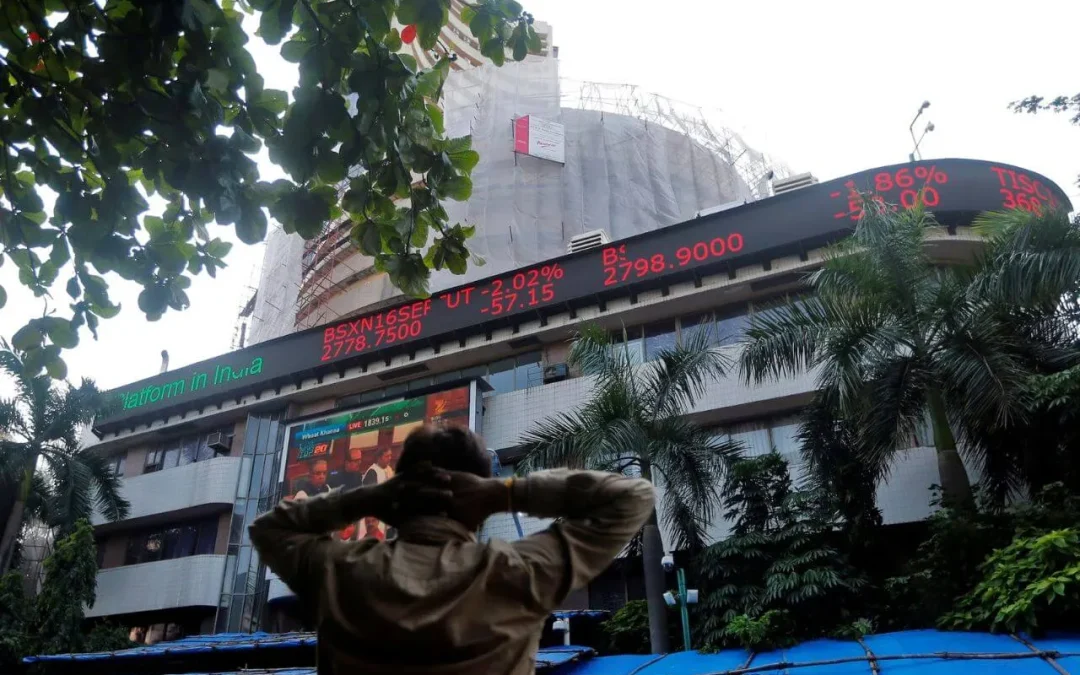The Indian stock market has experienced a significant fall today, with both the Nifty 50 and Sensex showing considerable declines. Investors and traders are closely watching the evolving global and domestic market conditions as they try to understand the reasons behind this drop.
In today’s session, both indices opened a bit higher, reflecting positive sentiment from the start. As trading continued, selling pressure increased, causing further declines in the indices. This led to a sharp fall in intraday gains for both the Sensex and Nifty, highlighting the cautious mood among market participants
Index Overview
The Nifty Index opened at Rs. 25,164.50, with a slight gap-up of up to 0.15 percent from its previous close of Rs. 25,141.40. However, the index has been in a bearish trend since the morning and has declined by up to 1.46 percent from the day’s high.
The Sensex Index opened at Rs. 82,571.67, with a slight gap-up of up to 0.16 percent from its previous close of Rs. 82,515.14. However, the index has been in a bearish trend since the morning and has declined by up to 1.37 percent from the day’s high.
Reason for the Fall
Renewed Tariff Threat
President Donald Trump said he will send letters to U.S. trading partners in the next week or two, explaining new tariff rates. This is ahead of a July 9 deadline, when higher tariffs could be brought back. Trump said the U.S. will not negotiate the new terms; countries must accept them or face higher taxes on their goods. So far, only the UK has made a trade deal with the U.S., and there’s a temporary pause on tariffs with China.
Geopolitical Tensions
Due to growing tensions in the Middle East and worries about a possible Israeli attack on Iran, the U.S. is taking precautions. It has started to remove non-essential staff from its embassy in Iraq and is allowing military families to leave bases in several nearby countries. These steps come as nuclear talks with Iran have broken down, increasing fears of conflict and danger to the American people and interests in the region.
Sectoral Weakness
Most sectors in the market showed weakness, with auto, realty, and consumer durables falling around 2 percent. Midcap and smallcap stocks also declined nearly 2 percent. Only a few sectors, like pharma, media, and telecom, remained steady.
Foreign Institutional Investors (FIIs) Selling
Foreign Institutional Investors (FIIs), who are big investors from other countries, sold shares worth Rs 446.31 crore on Wednesday. This means they took money out of the Indian stock market by selling their investments. When FIIs sell a lot of shares, it can cause the stock prices to drop and create pressure on the market.
Rising crude oil prices
Crude oil prices jumped more than 4% on Wednesday due to rising tensions between the US and Iran. Brent crude rose by $2.90, or 4.3%, closing at $69.77 per barrel, while US West Texas Intermediate crude went up $3.17, or 4.9%, settling at $68.15 per barrel. The increase reflects worries about possible conflicts in the Middle East, which could disrupt oil supplies and push prices higher
Weak global cues
The Key Asian stock markets like Shanghai’s SSE Composite, Japan’s Nikkei 225, and Hong Kong’s Hang Seng were all trading lower, falling by up to 1 percent. US markets closed down on Wednesday, and futures for Wall Street stocks were also negative on Thursday. European markets were weak too, with Germany’s DAX dropping 1.2 percent and Dow Futures slipping 0.5 percent.
Rise in India VIX
India’s volatility index, India VIX, went up by over 3 percent to 14.14, showing that investors are feeling more nervous about the market.
Written by Sridhar J
Disclaimer

The views and investment tips expressed by investment experts/broking houses/rating agencies on tradebrains.in are their own, and not that of the website or its management. Investing in equities poses a risk of financial losses. Investors must therefore exercise due caution while investing or trading in stocks. Trade Brains Technologies Private Limited or the author are not liable for any losses caused as a result of the decision based on this article. Please consult your investment advisor before investing.




